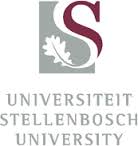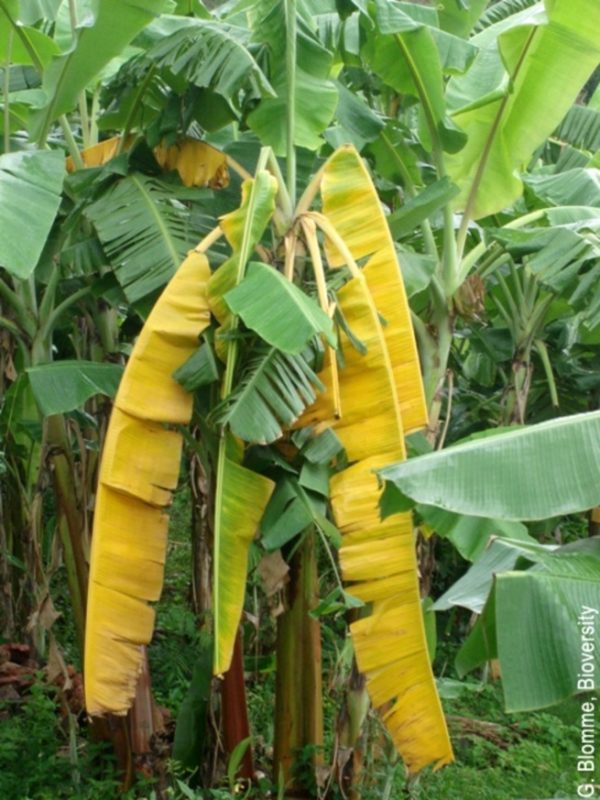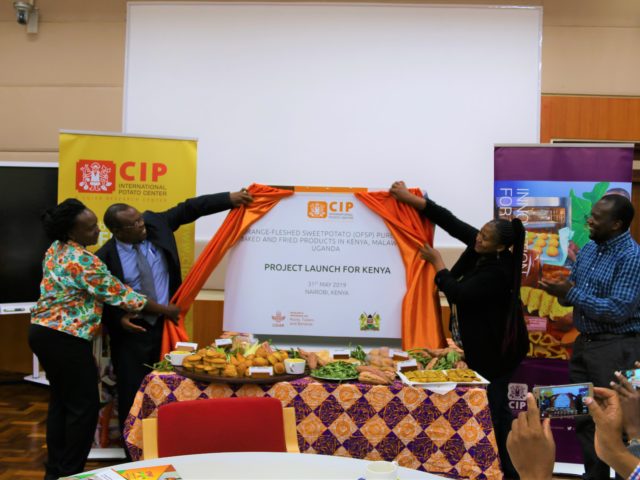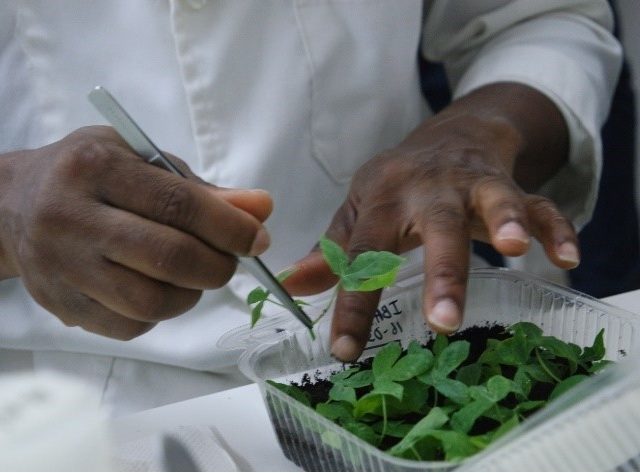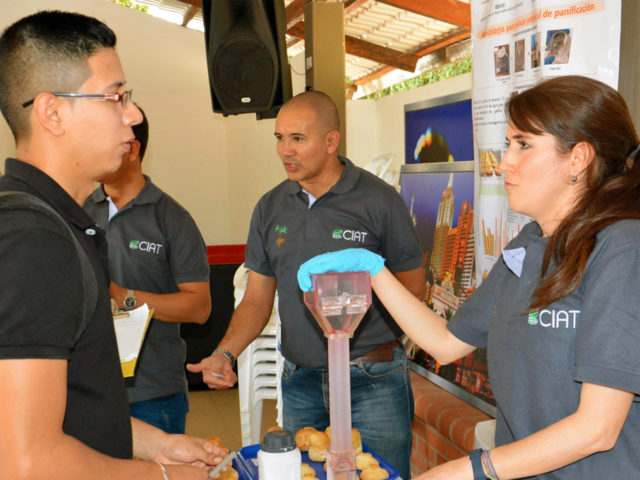In the first part of the 20th century, Fusarium Wilt Race 1 (popularly known as ‘Panama disease’) wiped out the popular Gros Michel banana variety. Currently the Tropical Race 4 (TR4) is threatening the Cavendish variety, the most important exported banana, which had proven to be resistant to Race 1. Prof. Altus Viljoen, from the Department of Plant Pathology at Stellenbosch University in South Africa, discussed TR4 and what is being done in Africa to combat this fungus.
Are there any differences between the current banana situation and the situation back in the 1950s?
There are many important differences. The principal difference is that we now have the scientific techniques (molecular markers and vegetative compatibility grouping analyses) and modern communication systems that enable us to accurately identify and report the different forms of the fungus. This allows us to rapidly respond to new outbreaks. Secondly, the number of banana varieties affected (the host range) by Foc (Fusarium oxysporum f. sp. cubense) TR4 is larger. The Cavendish monoculture plantations are particularly sensitive to Foc TR4. The narrow genetic background and dominance of Cavendish as a dessert banana puts global production under serious pressure. The use of banana tissue culture plantlets, particularly by commercial Cavendish producers, significantly prevents the chances for introduction of the fungus into new plantations through planting material, compared to previously when suckers from infected plants were used to establish plantations.
In Africa, a continent where millions of people depend on bananas and plantains for their living, what is the current situation?
It is important to know the situation in northern Mozambique where Foc TR4 was introduced, and the production systems in Africa, to understand the potential threat of the fungus to African bananas. The affected farm in Mozambique is a large commercial Cavendish banana export plantation that is well isolated from any other banana production areas. The company has the financial means to introduce strict sanitation and other measures to prevent spread, and recognizes their responsibility in containing the disease on-farm. Still, a great deal of work should be done in the region, country and continent to prevent the disease from spreading and/or being again introduced into the continent from Asia. In Africa, cooking and juicing bananas are mostly cultivated in mixed production systems that make them not as vulnerable to Foc TR4 as in monoculture Cavendish plantations. Testing of a small selection of cooking banana varieties in Asia indicated that they have some resistance to Foc TR4. A much more extensive testing of African bananas, however, needs to be done.
What has been done so far among the scientific community to tackle the issue?
Since, and prior to the discovery of Foc TR4 in Mozambique, significant actions had been taken to address the introduction of the fungus into the African continent. For the past 4 years we have been testing a small collection of East African Highland bananas and plantains for resistance to the Foc TR4 in Asia, and have determined the diversity of Foc in banana production areas throughout central and eastern Africa. Since the outbreak, awareness has been raised throughout southern Africa, Mozambique scientists have been trained in Foc TR4 diagnostics and identification, and a stakeholder workshop had been held in Stellenbosch where an African Consortium for Foc TR4 (AC4TR4) developed a strategy to deal with Foc TR4 on the continent. This meeting was assembled by the Southern African Development Community (SADC) in partnership with the University of Stellenbosch (SUN), the International Institute for Tropical Agriculture (IITA), Bioversity International, the Common Market for Eastern and Southern Africa (COMESA) and Association for Strengthening Agricultural Research in Eastern and Central Africa (ASARECA). Also in attendance were delegates from national research organizations and government representatives of 10 countries in eastern, central and southern Africa.
What is the recommended course of action?
The strategy for Africa consists of four key approaches, each with a number of activities. These four approaches include:
- To arrest and contain the spread of Foc TR4 in Mozambique and surrounding countries
- To strengthen the capacity of the national agriculture research systems (NARS) to sustainably manage the disease in Africa
- To institute mechanisms to coordinate and communicate AC4TR4 activities in Africa
- To carry out research to generate new information and technologies for sustainable management of Foc TR4
What is/has been the role of Stellenbosch University in dealing with this issue?
Stellenbosch University will take the technical lead in dealing with the introduction onset of Foc TR4 into the African continent. It will support the affected farm in collaboration with the Mozambique Ministry of Agriculture, IITA and Bioversity International. It has been responsible for the initial identification of the pathogen, and for implementing a containment strategy on-farm. Several African students working on Foc TR4 in Africa are registered at Stellenbosch University, and we are in an optimal position to collaborate with other African universities to build human capacity and implement containment methods on the continent.
How is Stellenbosch University interacting with RTB scientists?
Stellenbosch University has a long and very fruitful relationship with RTB scientists in Africa and globally. With the outbreak of the disease in northern Mozambique, Dr Gus Molina, from Bioversity International in the Philippines, was invited to the farm and confirmed the symptoms were similar to those he experienced in Asia. After Foc TR4 was identified at Stellenbosch University, Dr Fen Beed of IITA encouraged Serafina Mangana, head of the Mozambique regulatory authority, to notify the IPPC which in turn has led to funding support from FAO. RTB provided funds to support the containment measures in Mozambique which was coordinated by Stellenbosch University with logistical support from the IITA office in Mozambique. IITA then rallied up support from regional trade and research organizations, plus national regulatory and research staff, donors and commercial banana partners that led to an international workshop hosted by SADC in Stellenbosch. Key outputs included the development by expert stakeholders of a strategy to deal with Foc TR4 on the continent and the Stellenbosch Declaration. A further output from collaboration between Stellenbosch University and RTB is the development of a web-based information portal dedicated to Foc TR4 in Africa.
Stellenbosch University has been an RTB partner since the beginning of the research program. What do you see as potential new areas of collaboration?
RTB permits collaboration across different CGIAR centres and their partner networks, and thus the ability to harness comparative advantages of these. New opportunities for collaboration include coordination, planning and implementation of activities to contain and prevent the spread of Foc TR4, to safeguard banana systems and the people that rely upon them in Africa. While Stellenbosch University has the technical competence, these activities require facilitation through the RTB network to achieve wide scale outreach and effective partnerships across Africa and Asia. Jointly, Stellenbosch University and RTB plan to test a wider range of African banana varieties in Asia, and to introduce Cavendish banana somaclones with resistance to Foc TR4 into Africa. We have already developed a joint strategy for the continent, and this now needs to be implemented at a multi-disciplinary, multi-stakeholder level. The fortunate thing in the Stellenbosch University – RTB partnership is that there is a long history of collaboration and trust between partners, and this will speed up our activities. It’s important to mention, as a failure to respond promptly and efficiently to the current challenge to prevent Foc TR4 from spreading in Africa would be a major setback for this partnership.
See: The ‘Banana Fusarium wilt in Africa’ platform, currently under development
